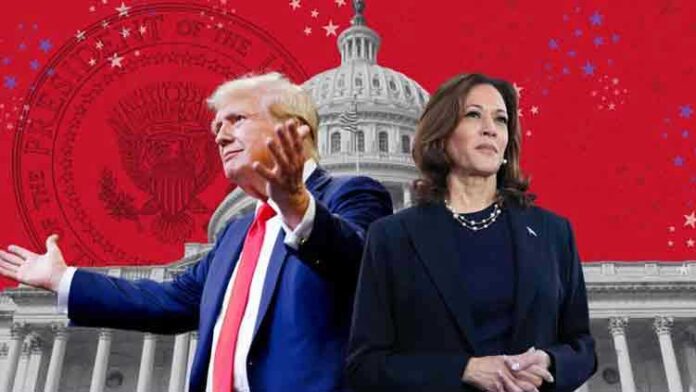WASHINGTON (Bakhabar Pakistan) – The highly anticipated day for the U.S. presidential election has arrived. Today, November 5th, millions of American citizens will head to the polls to select the individual who will lead the country for the next four years.
It’s noteworthy that ahead of today’s voting, nearly 80 million Americans had already cast their ballots through early and mail-in voting, a testament to the high stakes and engagement seen in this election cycle. To secure the presidency, a candidate must achieve at least 270 out of the 538 available electoral votes, a benchmark that has historically determined the path to the White House.
Comprehensive Electoral Process
This pivotal election isn’t just about choosing a president. Voters will also decide the fate of 435 seats in the House of Representatives, elect 34 senators, and select 13 state governors. These results will shape the balance of power in Congress, affecting legislative priorities and the president’s ability to implement policies.
The Start of the Election Race
The electoral process involves around 161 million registered voters, who have the opportunity to make their voices heard on this decisive day. Preliminary data from early voting indicates strong participation, yet no clear winner has emerged. States such as North Carolina saw an early voter turnout of 55%, Georgia 50%, and Tennessee 49%, showcasing regional differences in voter engagement.
Swing States and Their Influence
This election, like many before it, hinges on the outcome in critical swing states. Seven battleground states, including Michigan, are expected to play a significant role in determining the next president. In Michigan, a fierce contest is anticipated, as both President Donald Trump and Democratic candidate Kamala Harris have maintained strong support bases. Trump is expected to maintain dominance in Republican-leaning states, while Harris is predicted to secure Democratic strongholds. However, these swing states are pivotal and could tip the scales in favor of either candidate.
A Battle of Words and Strategies
As the campaign intensifies, Donald Trump has urged American voters to make an informed decision, describing Harris as unfit for office and using harsh rhetoric by calling her “dumb as a rock.” On the other hand, Kamala Harris has demonstrated unwavering determination, emphasizing her vision for the country and confidently stating that she is poised to become the next U.S. president.
Pakistani-American Engagement
The Pakistani-American community is particularly invested in this election, driven by key issues that resonate with their interests, most notably the ongoing conflict in Gaza. This concern has galvanized political participation among this group, seeking representation that aligns with their values and priorities.
Several Pakistani-Americans are vying for positions under the Democratic banner. Notably, Suleman Lulani and Suleman Bhojani are contesting from Texas, while Ayesha Farooqi and Amir Sultan are running from Michigan and New York, respectively. Their candidacies symbolize the growing involvement of the Pakistani diaspora in U.S. politics, marking a significant step towards broader representation.
Enhanced Security Measures
Given the potential for unrest, robust security measures have been put in place to safeguard the election process. National Guard units have been deployed to manage security in states like Oregon, Nevada, and Washington. Additionally, the FBI has taken command in certain high-risk areas to ensure a smooth and secure voting process.
The significance of this election is underscored by its impact on both domestic and international policies, which could shape America’s trajectory for years to come. It’s also worth noting that under U.S. law, no individual can serve as president for more than two terms, highlighting the unique challenge each candidate faces in carving a path to victory.
Anticipation and Uncertainty
As the nation waits, the atmosphere is one of anticipation mixed with tension. The next hours will reveal not only the identity of the 46th president but also indicate how deeply divided or united the American electorate stands in this consequential moment.
The outcome could herald major shifts in policies on issues ranging from healthcare and immigration to foreign affairs and climate change, underscoring the importance of each vote cast. For now, all eyes remain fixed on the results that will shape the next four years of the American political landscape.


